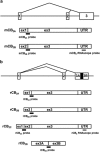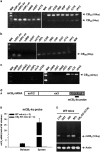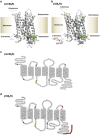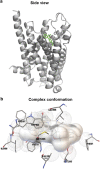Species differences in cannabinoid receptor 2 and receptor responses to cocaine self-administration in mice and rats
- PMID: 25374096
- PMCID: PMC4330519
- DOI: 10.1038/npp.2014.297
Species differences in cannabinoid receptor 2 and receptor responses to cocaine self-administration in mice and rats
Abstract
The discovery of functional cannabinoid receptors 2 (CB2Rs) in brain suggests a potential new therapeutic target for neurological and psychiatric disorders. However, recent findings in experimental animals appear controversial. Here we report that there are significant species differences in CB2R mRNA splicing and expression, protein sequences, and receptor responses to CB2R ligands in mice and rats. Systemic administration of JWH133, a highly selective CB2R agonist, significantly and dose-dependently inhibited intravenous cocaine self-administration under a fixed ratio (FR) schedule of reinforcement in mice, but not in rats. However, under a progressive ratio (PR) schedule of reinforcement, JWH133 significantly increased breakpoint for cocaine self-administration in rats, but decreased it in mice. To explore the possible reasons for these conflicting findings, we examined CB2R gene expression and receptor structure in the brain. We found novel rat-specific CB2C and CB2D mRNA isoforms in addition to CB2A and CB2B mRNA isoforms. In situ hybridization RNAscope assays found higher levels of CB2R mRNA in different brain regions and cell types in mice than in rats. By comparing CB2R-encoding regions, we observed a premature stop codon in the mouse CB2R gene that truncated 13 amino-acid residues including a functional autophosphorylation site in the intracellular C-terminus. These findings suggest that species differences in the splicing and expression of CB2R genes and receptor structures may in part explain the different effects of CB2R-selective ligands on cocaine self-administration in mice and rats.
Figures







References
-
- Adamczyk P, Miszkiel J, McCreary AC, Filip M, Papp M, Przegaliński E. The effects of cannabinoid CB1, CB2 and vanilloid TRPV1 receptor antagonists on cocaine addictive behavior in rats. Brain Res. 2012;1444:45–54. - PubMed
-
- Al Mansouri S, Ojha S, Al Maamari E, Al Ameri M, Nurulain SM, Bahi A. The cannabinoid receptor 2 agonist, β-caryophyllene, reduced voluntary alcohol intake and attenuated ethanol-induced place preference and sensitivity in mice. Pharmacol Biochem Behav. 2014;124:260–268. - PubMed
-
- Arnold K, Bordoli L, Kopp J, Schwede T. The SWISS-MODEL workspace: a web-based environment for protein structure homology modelling. Bioinformatics. 2006;22:195–201. - PubMed
Publication types
MeSH terms
Substances
Grants and funding
LinkOut - more resources
Full Text Sources
Other Literature Sources
Research Materials

